The 'departure' between positions 60°n 160°e and 60°n 'x' is 900 nm what is ? [ MCQ aircraft ]
Question 158-1 : 170°w 140°w 145°e 175°e
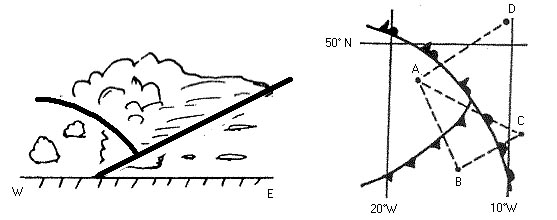 170°w.
170°w. An aircraft at latitude 02°20'n tracks 180° t for 685 km on completion of the ?
Question 158-2 : 03°50's 04°10's 04°30's 09°05's
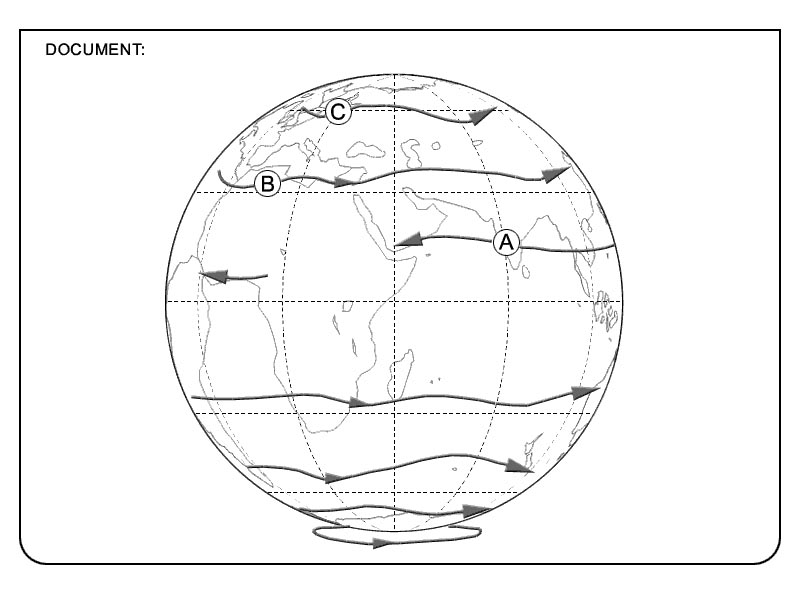 03°50's.
03°50's. An aircraft at latitude 10° south flies north at a gs of 890 km/h what will ?
Question 158-3 : 02°00'n 12°15'n 22°00'n 03°50'n
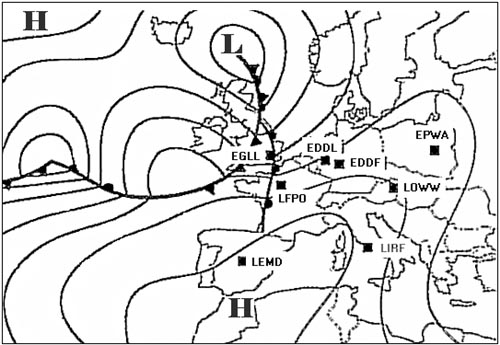 02°00'n.
02°00'n. An aircraft at latitude 10°north flies south at a groundspeed of 445 km/h what ?
Question 158-4 : 02°00's 12°15's 22°00's 03°50's
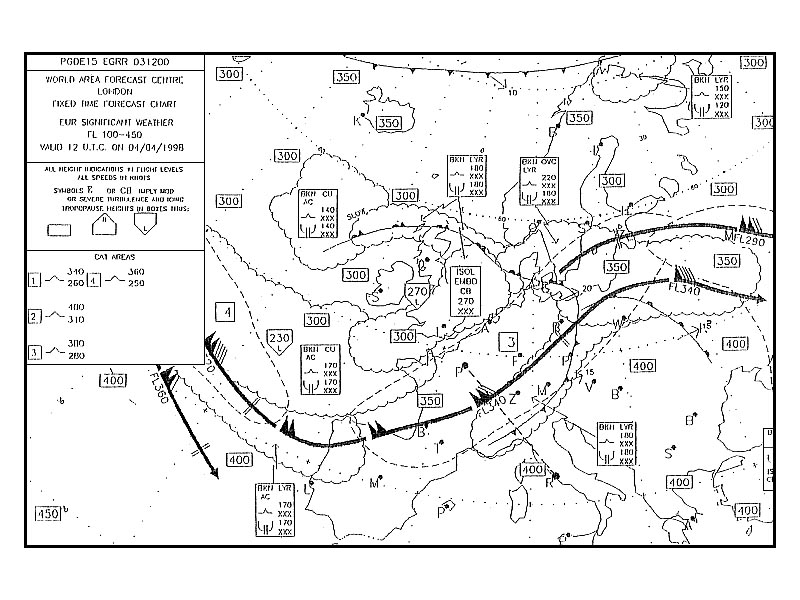 02°00's.
02°00's. An aircraft is flying in the shortest possible way between point 1 and 2 and ?
Question 158-5 : 9° zero +9° 4°
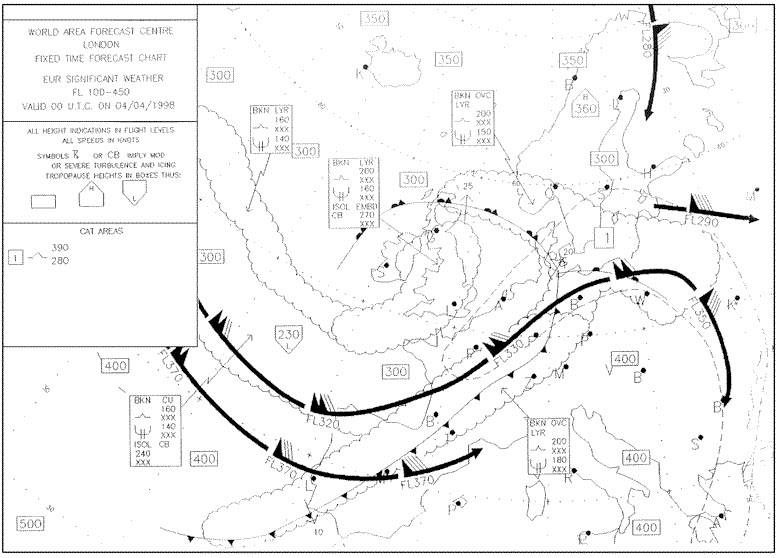 -9°.
-9°. At the magnetic equator when accelerating after take off on heading west a ?
Question 158-6 : Indicates the correct heading overreads the heading underreads the heading indicates a turn to the south
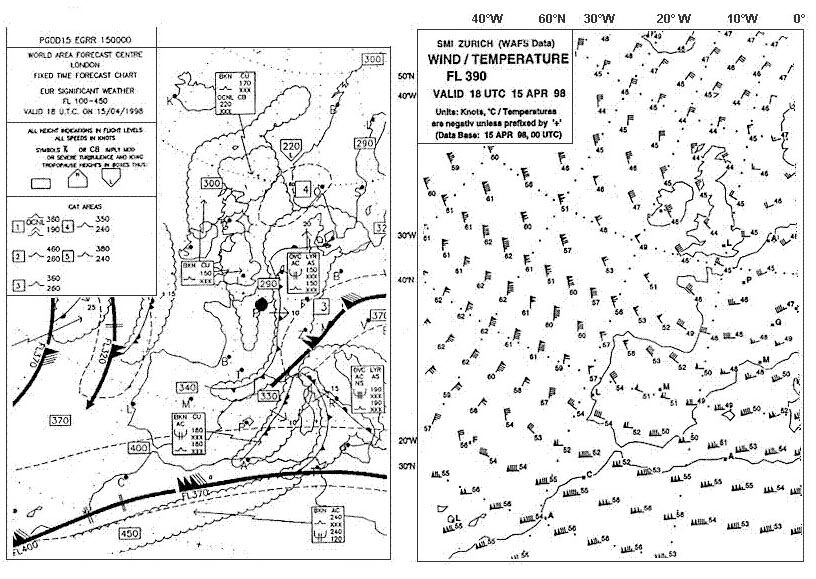 Indicates the correct heading.
Indicates the correct heading. The circumference of the parallel of latitude at 60°n is approximately ?
Question 158-7 : 10 800 nm 18 706 nm 20 000 nm 34 641 nm
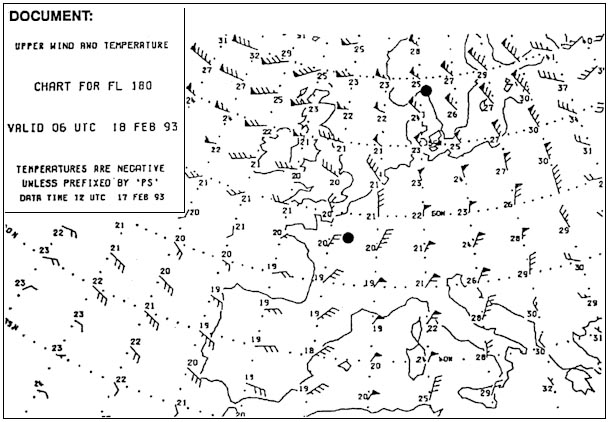 10 800 nm.
10 800 nm. Given .position 'a' n60 w020 position 'b' n60 w021 position 'c' n59 w020 .what ?
Question 158-8 : 30 nm and 60 nm 52 nm and 60 nm 60 nm and 30 nm 60 nm and 52 nm
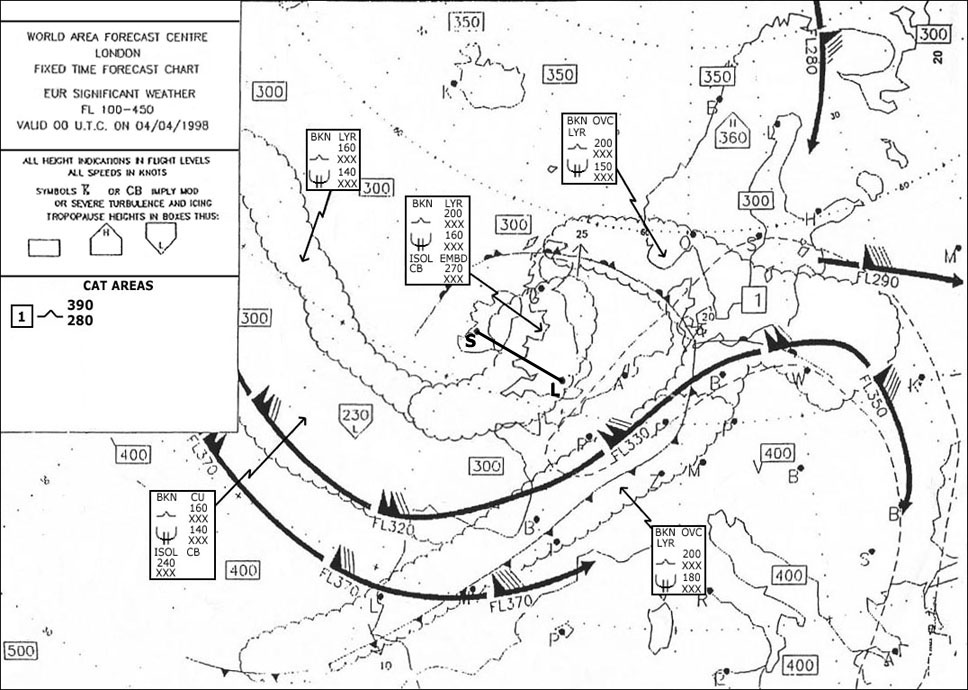 30 nm and 60 nm.
30 nm and 60 nm. The coordinates of the heliport at issy les moulineaux are n48°50' e002°16 5' ?
Question 158-9 : S48°50' w177°43 5' s48°50' e177°43 5' s41°10' w177°43 5' s41°10' e177°43 5'
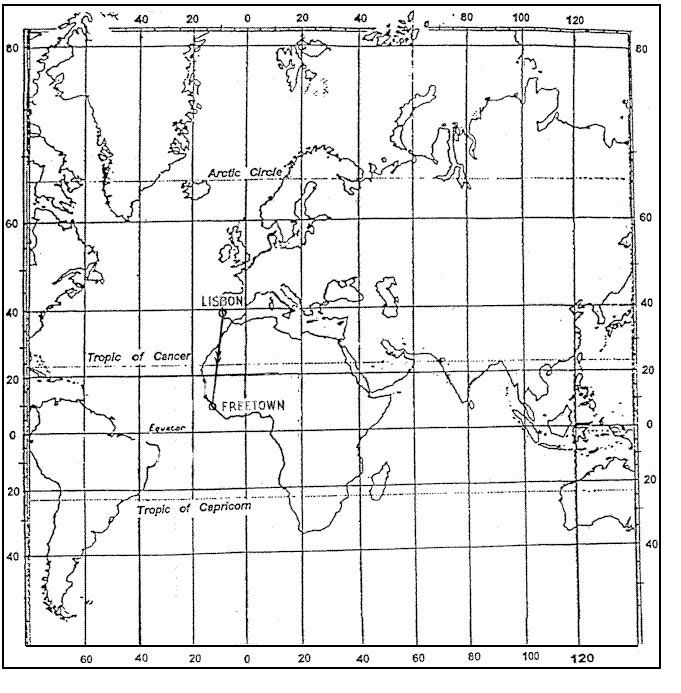 S48°50' w177°43.5'.
S48°50' w177°43.5'. Isogonals are lines of equal ?
Question 158-10 : Magnetic variation compass deviation pressure wind velocity
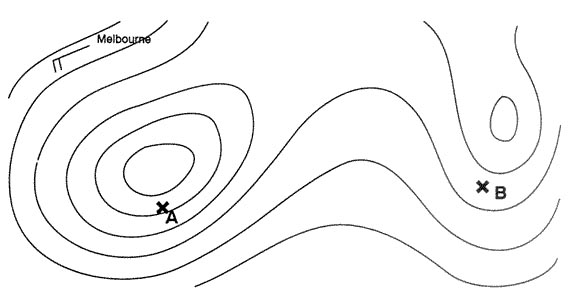 Magnetic variation.
Magnetic variation. At a specific location the value of magnetic variation ?
Question 158-11 : Varies slowly over time depends on the type of compass installed depends on the magnetic heading depends on the true heading
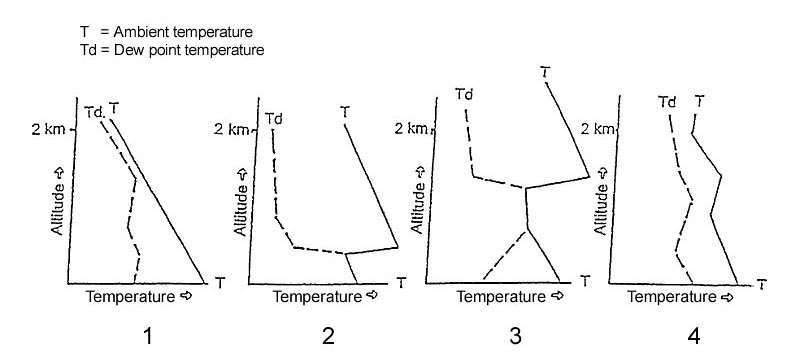 Varies slowly over time.
Varies slowly over time. Parallels of latitude except the equator are ?
Question 158-12 : Rhumb lines great circles both rhumb lines and great circles are neither rhumb lines nor great circles
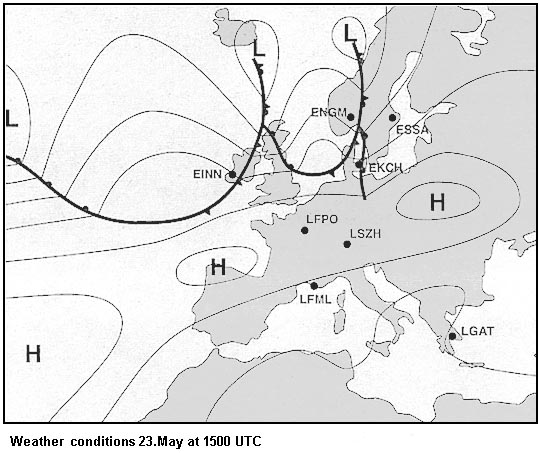 Rhumb lines.
Rhumb lines. Given .a is n55° 000°.b is n54° e010°.the average true course of the great ?
Question 158-13 : 100° 104° 107° 096°
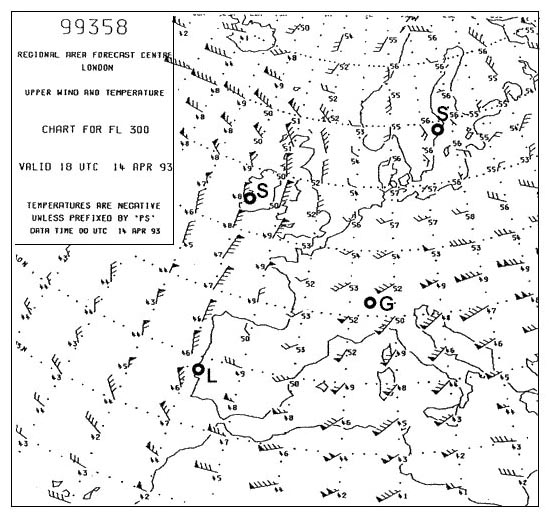 100°.
100°. Given .position 'a' is n00° e100° position 'b' is 240° t 200 nm from 'a' ?
Question 158-14 : S01°40' e097°07' n01°40' e097°07' s01°40' e101°40' n01°40' e101°40'
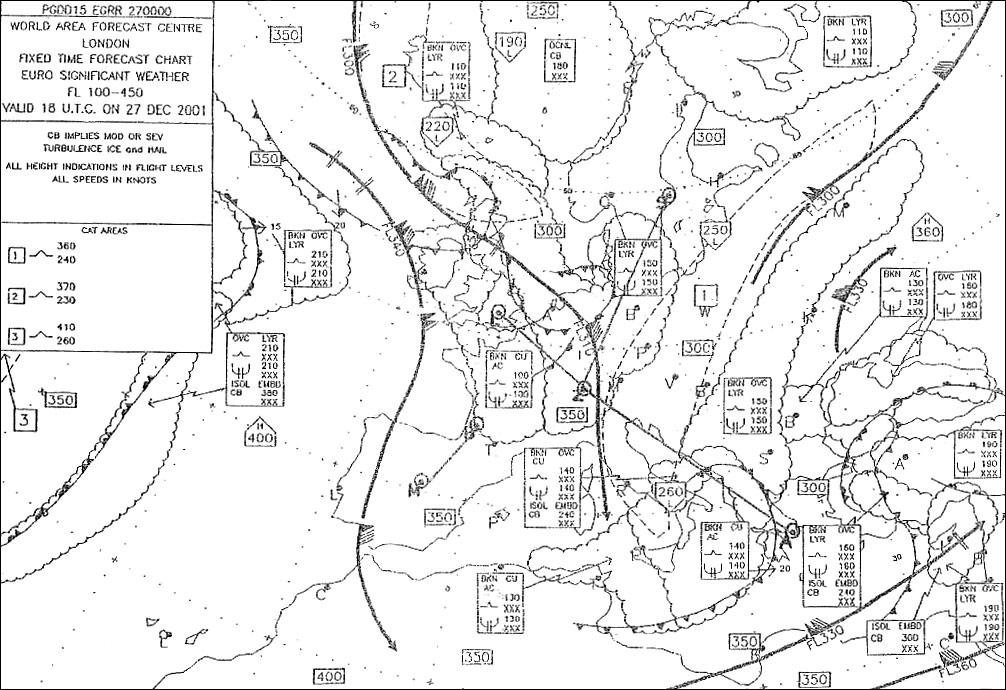 S01°40' e097°07'.
S01°40' e097°07'. The angle between magnetic north and compass north is called ?
Question 158-15 : Compass deviation compass error magnetic variation alignment error
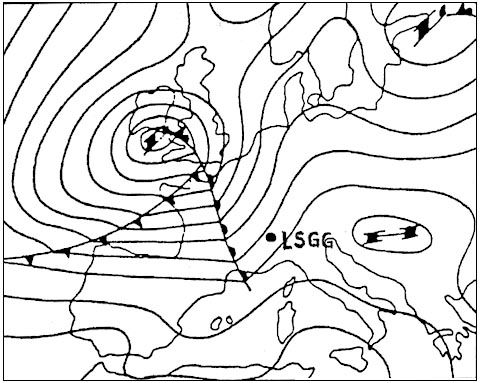 Compass deviation.
Compass deviation. The north and south magnetic poles are the only positions on the earth's ?
Question 158-16 : A freely suspended compass needle would stand vertical a position where the horizontal component of the earth's magnetic field is a maximum a freely suspended compass needle will stand horizontal the value of magnetic variation equals 90°
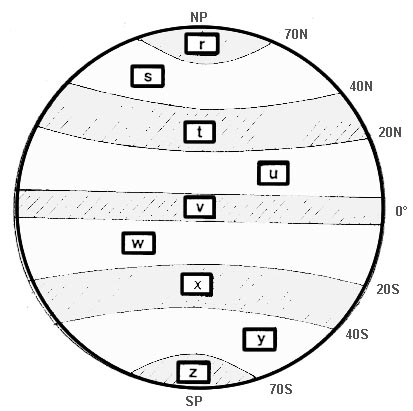 A freely suspended compass needle would stand vertical.
A freely suspended compass needle would stand vertical. Value for the flattening of the earth is 1/298 earth's semi major axis as ?
Question 158-17 : 6356 9 6378 4 6367 6399 9
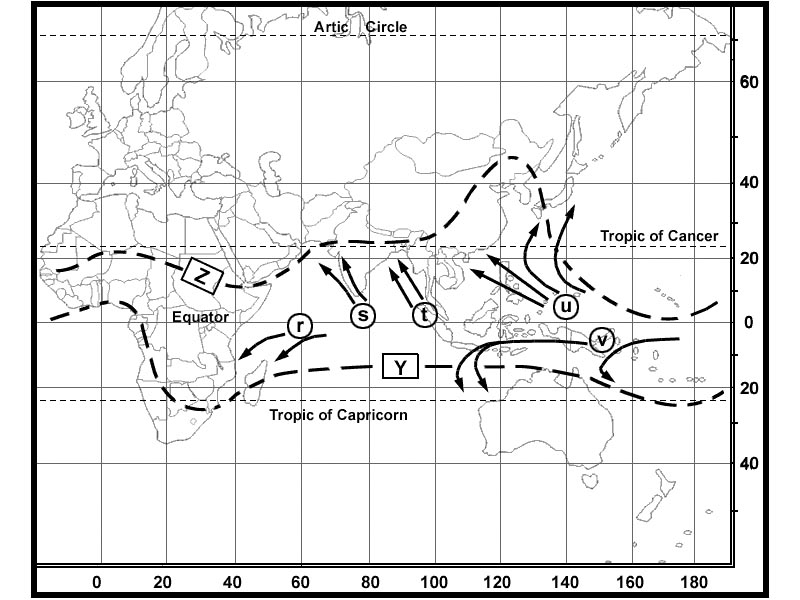 6356.9
6356.9 Morning civil twilight begins when ?
Question 158-18 : The centre of the sun is 6° below the celestial horizon the centre of the sun is 12° below the celestial horizon the centre of the sun is 18° below the celestial horizon the sun's upper edge is tangential to the celestial horizon
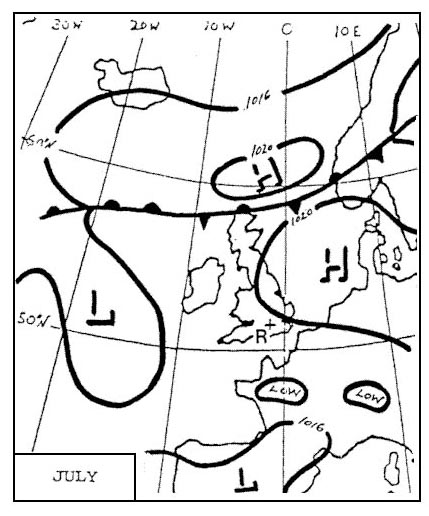 The centre of the sun is 6° below the celestial horizon.
The centre of the sun is 6° below the celestial horizon. How many small circles can be drawn between any two points on a sphere ?
Question 158-19 : An unlimited number two one none
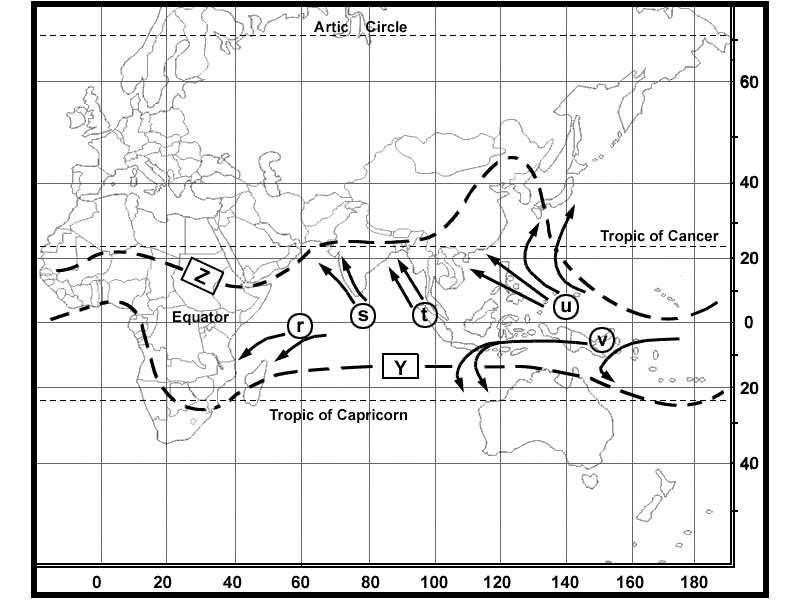 An unlimited number.
An unlimited number. An aircraft is following the 45°n parallel of latitude the track followed is a ?
Question 158-20 : Rhumb line constant heading track great circle constant drift track
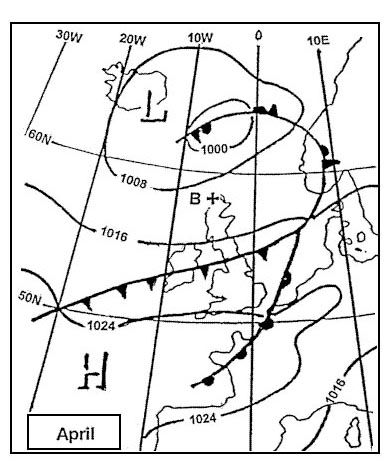 Rhumb line.
Rhumb line. A rhumb line on a direct mercator chart appears as a ?
Question 158-21 : Straight line complex curve curve convex to the nearer pole small circle concave to the nearer pole
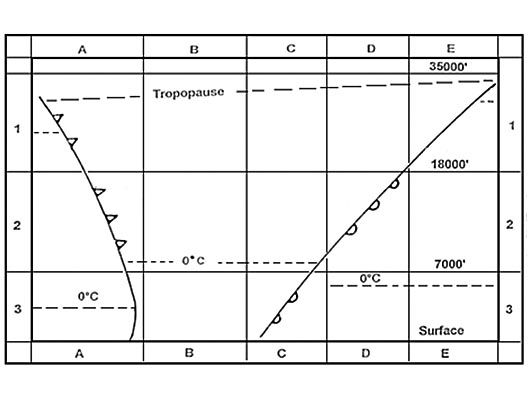 Straight line.
Straight line. A great circle on the earth running from the north pole to the south pole is ?
Question 158-22 : A meridian a parallel of latitude a difference of longitude a longitude
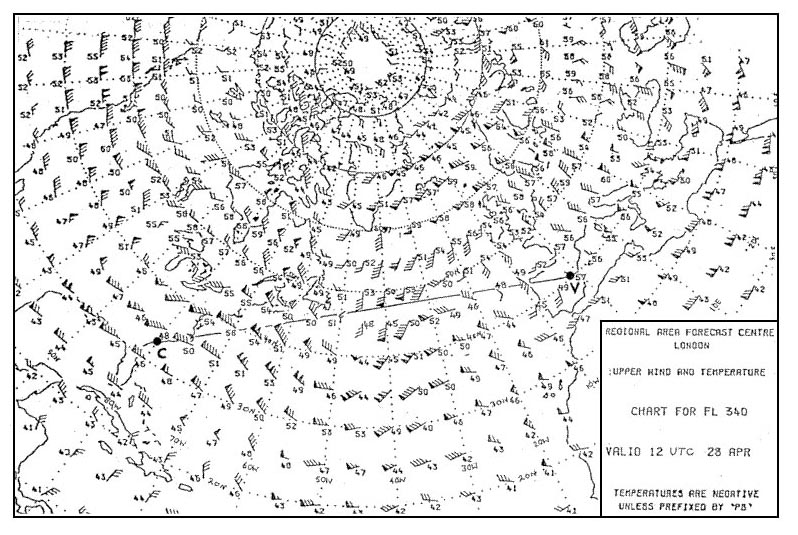 A meridian.
A meridian. If you are flying along a parallel of latitude you are flying ?
Question 158-23 : A rhumb line track a great circle track on a north south track on a track which is constantly changing direction
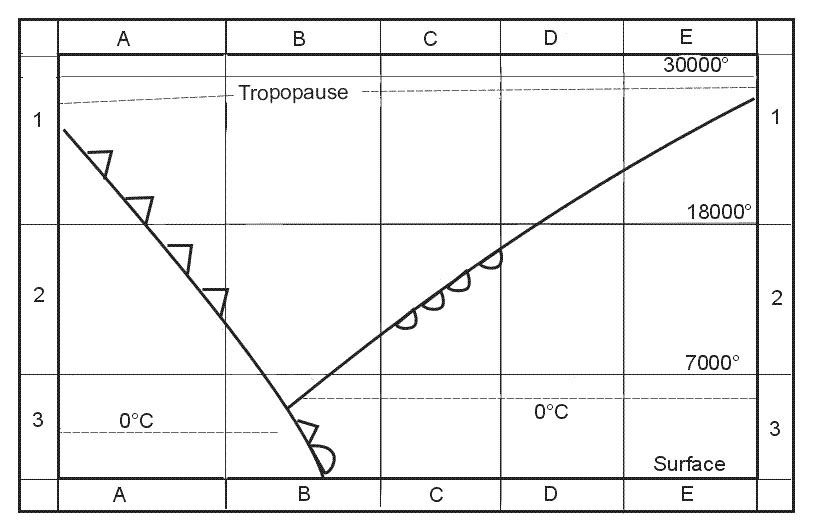 A rhumb line track.
A rhumb line track. What is the rhumb line distance between two positions on latitude 60°n that ?
Question 158-24 : 300 nm 520 nm 600 nm 866 nm
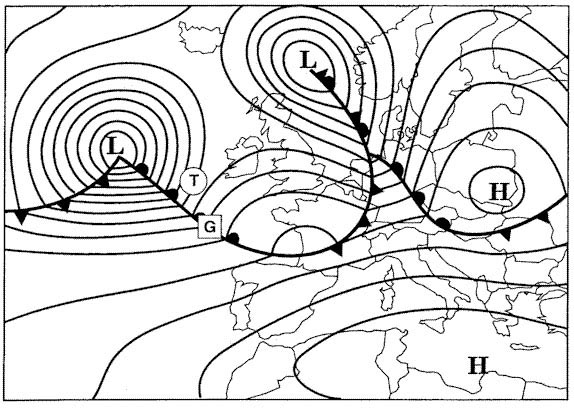 300 nm.
300 nm. What is the length of one degree of longitude at latitude 60° south ?
Question 158-25 : 30 nm 52 nm 60 nm 90 nm
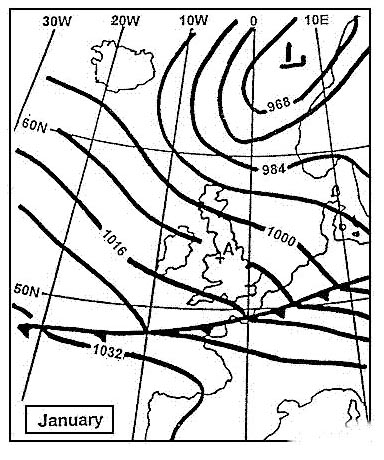 30 nm.
30 nm. The initial great circle track from a to b is 080° and the rhumb line track is ?
Question 158-26 : 266° and in the northern hemisphere 260° and in the southern hemisphere 260° and in the northern hemisphere 266° and in the southern hemisphere
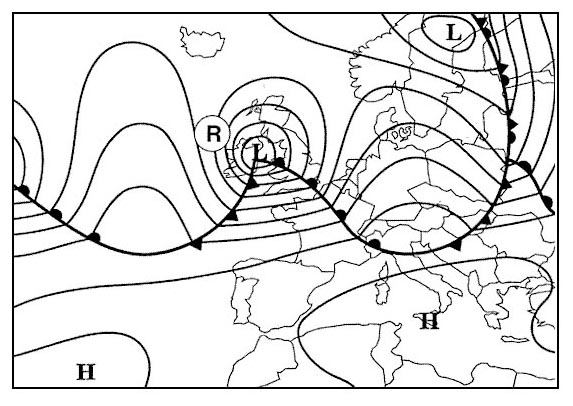 266° and in the northern hemisphere.
266° and in the northern hemisphere. The great circle track measured at a 45°00'n 010°00'w from a to b 45°00'n ?
Question 158-27 : 273° 090° 093° 270°
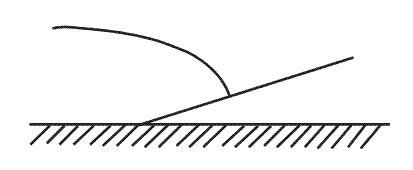 273°.
273°. When the time is 2000 utc it is ?
Question 158-28 : 1400 lmt at 90° west 2400 lmt at 120° west 1200 lmt at 60° east 0800 lmt at the prime meridian
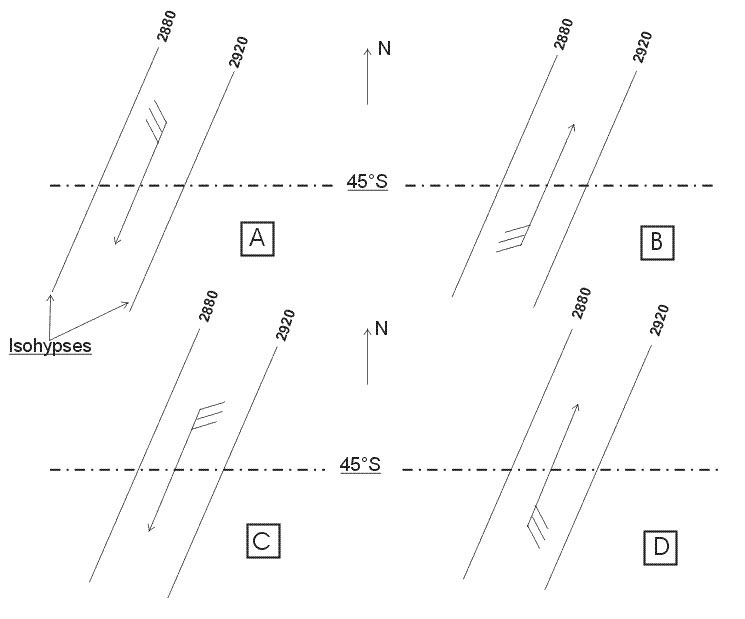 1400 lmt at 90° west.
1400 lmt at 90° west. The distance along a meridian between 63°55'n and 13°47's is ?
Question 158-29 : 4662 nm 7702 nm 5008 nm 3008 nm
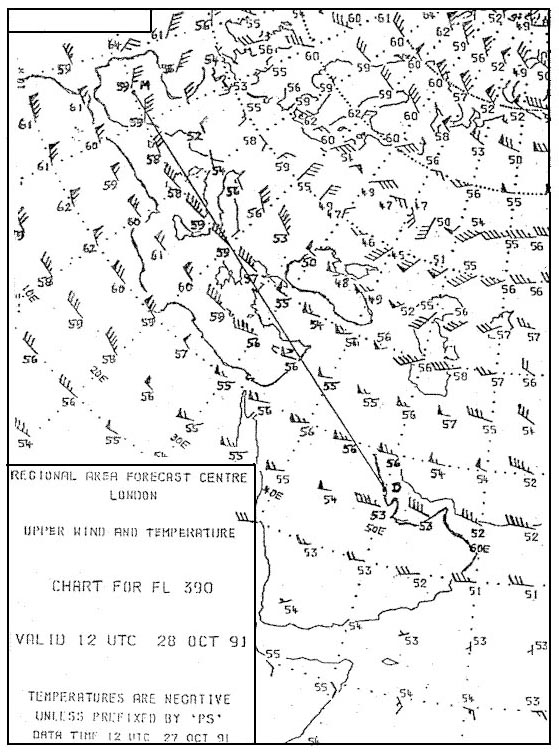 4662 nm.
4662 nm. In which occasions does the rhumb line track and the great circle track ?
Question 158-30 : On tracks directly north south and on east west tracks along the equator on high latitude tracks directly east west on east west tracks in the northern hemisphere north of the magnetic equator on east west tracks in polar areas
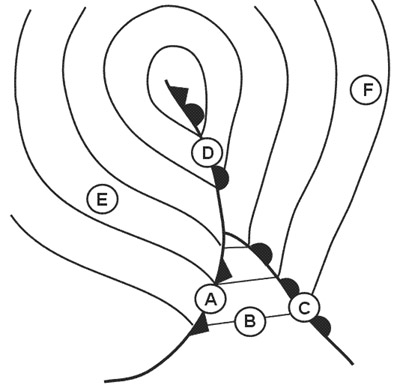 On tracks directly north - south and on east - west tracks along the equator.
On tracks directly north - south and on east - west tracks along the equator. In the northern hemisphere the rhumb line track from position a to b is 230° ?
Question 158-31 : 050° 053° 056° 047°
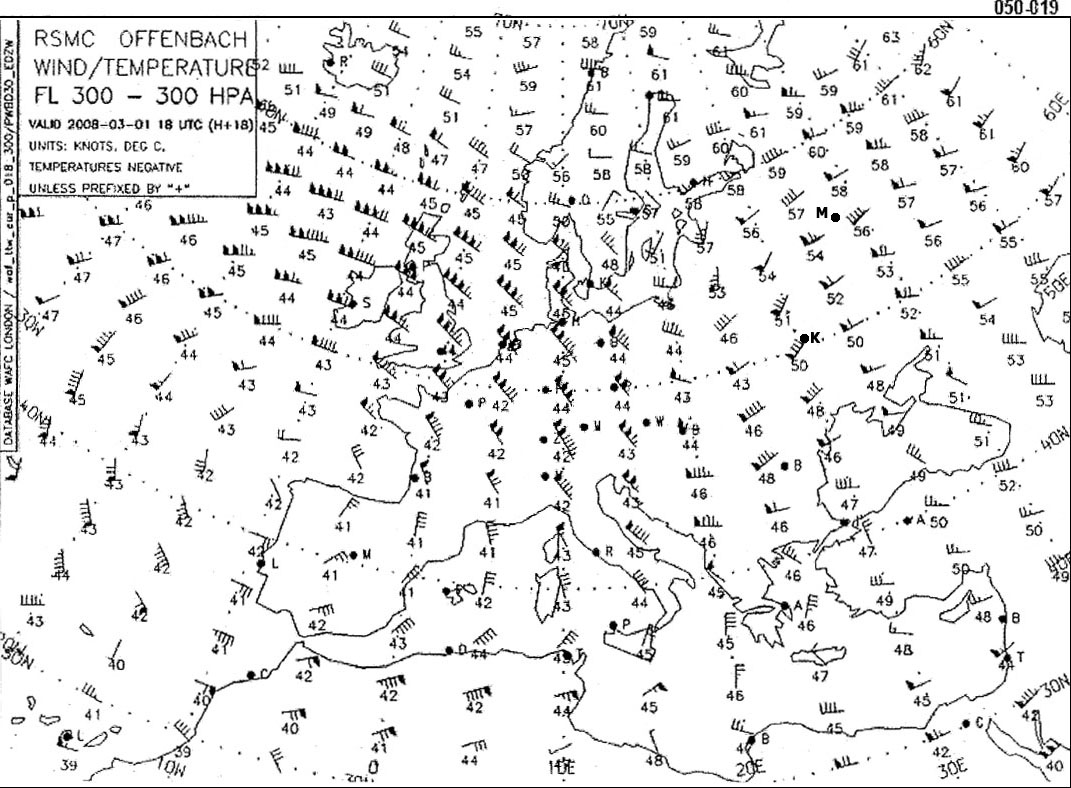 050°
050° How many degrees has the mean sun moved along the celestial equator in 8 hours ?
Question 158-32 : 122° 148° 18° 56°
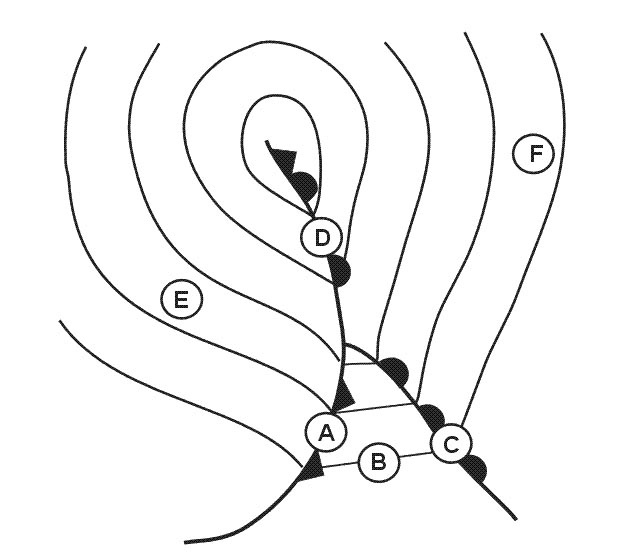 122°.
122°. The great circle bearing of position b from position a in the northern ?
Question 158-33 : 228° 212° 220° 224°
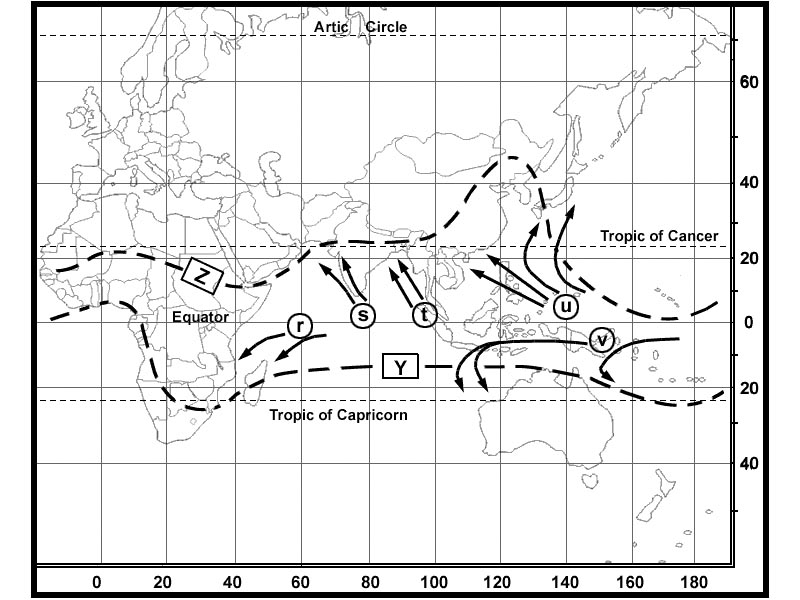 228°.
228°. When flying on a westerly great circle track in the southern hemisphere you will ?
Question 158-34 : Experience an increase in the value of true track fly a spiral and finally end up at the south pole always have the rhumb line track between the departure point and the destination to the left of your great circle track experience a decrease in the value of true track
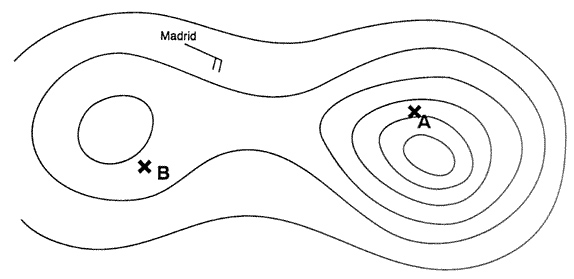 Experience an increase in the value of true track.
Experience an increase in the value of true track. When the time is 1400 lmt at 90° west it is ?
Question 158-35 : 1200 lmt at 120° west 1400 lmt at 90° east 1000 lmt at 60° west 0600 lmt at the prime meridian
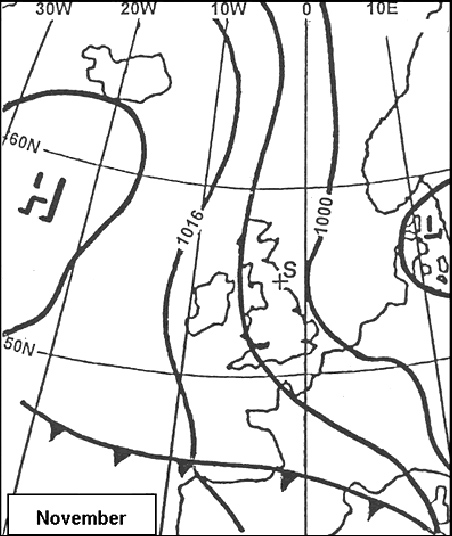 1200 lmt at 120° west.
1200 lmt at 120° west. Which of the following alternatives is correct when you cross the international ?
Question 158-36 : The date will increase if you are crossing on a westerly heading the date will increase if you are crossing on a easterly heading the date will always be the same if you are crossing from westerly longitude to easterly longitude the date will remain the same
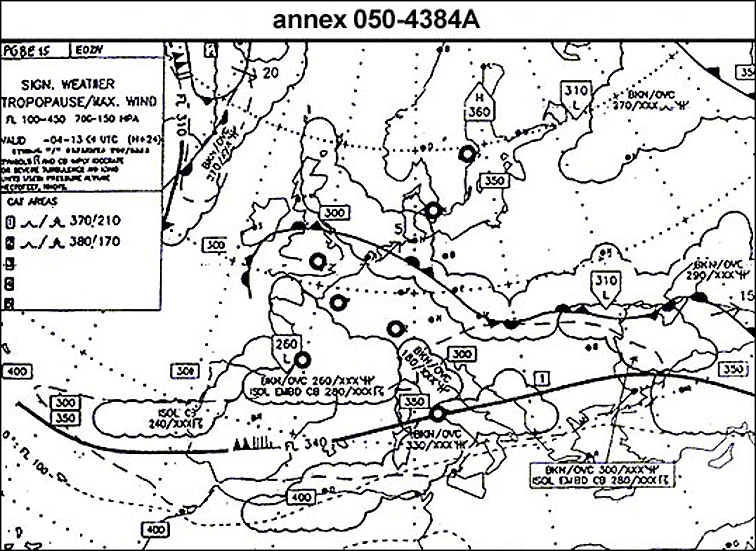 The date will increase if you are crossing on a westerly heading.
The date will increase if you are crossing on a westerly heading. The local hour angle of the mean sun at 1200 lmt is ?
Question 158-37 : 000° 090° 180° 270°
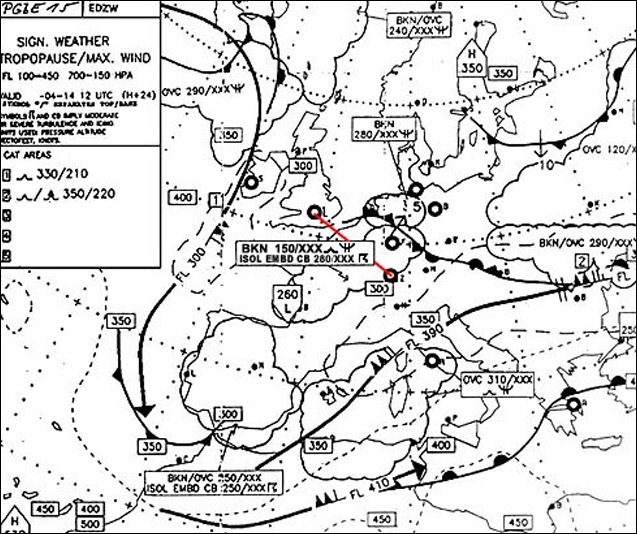 000°.
000°. Location a is at 50°n 030°w and location b is at 50°s 030°w on 27th ?
Question 158-38 : Sunrise will be later at a than it is at b and sunset will be earlier at a than it is at b sunrise and sunset will be at the same time at a and b sunrise will be earlier at a than it is at b and sunset will be later at a than it is at b sunrise will be earlier at a than it is at b and sunset will be earlier at a than it is at b
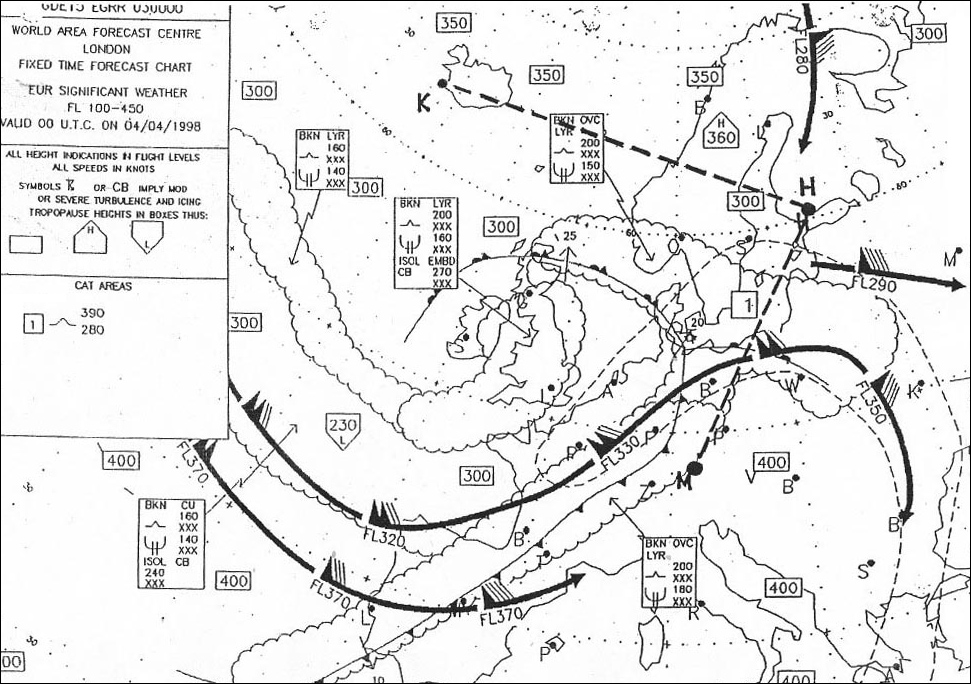 Sunrise will be later at a than it is at b and sunset will be earlier at a than it is at b.
Sunrise will be later at a than it is at b and sunset will be earlier at a than it is at b. An aircraft is flying a great circle track between waypoints number 4 45°00'n ?
Question 158-39 : Increased by less than 10° remained unchanged decreased by more than 10° decreased by less than 10°
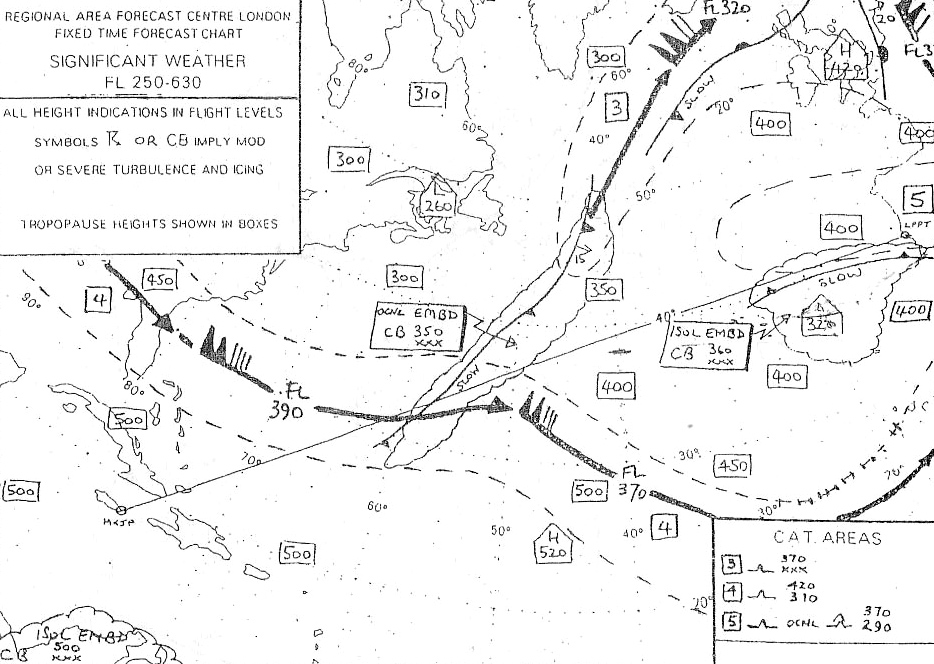 Increased by less than 10°.
Increased by less than 10°. Given .variation is 6°w isogonic lines jan 2002 .average annual increase 10' ?
Question 158-40 : 6 5°w 5 5°w 5 5°e 6 3°w
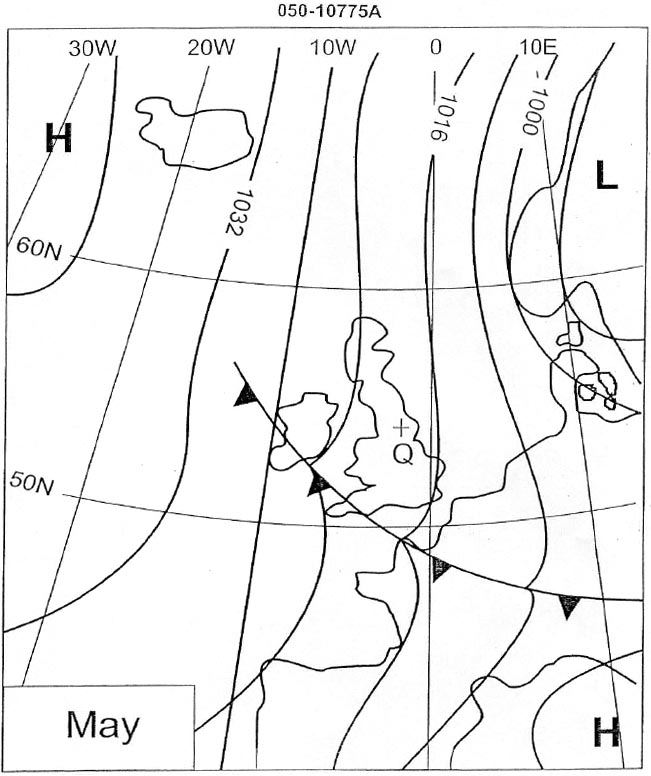 6.5°w.
6.5°w. ~
Exclusive rights reserved. Reproduction prohibited under penalty of prosecution.
6279 Free Training Exam
